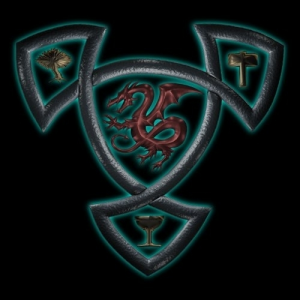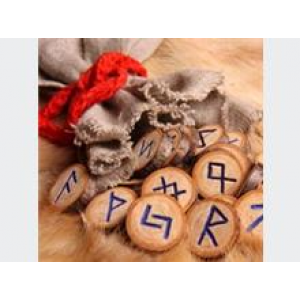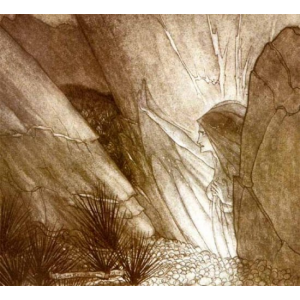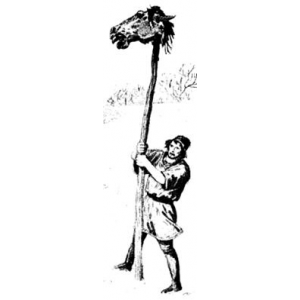
In the Nordic system, two Deities are connected to magic: Odin – the God of war, magic and Runes; and Freya – the Goddess of magic and sex. Odin brought the knowledge of the Runes to man, which he came to know hanging on the sacred tree Yggdrasil, dying symbolically – while Freya already had knowledge of magic, so she in part shared it with other Gods. These two Deities collaborated magically. Freya is the only one of all the Gods and Goddesses, that Odin shared his knowledge of Runes with, and she in return showed him many of her magical secrets. This brief reminder of the tales from the Nordic mythology is an introduction to the magical practice of Asatru. Although there are many ways of practicing magic in the Asatru system, they can mostly be divided into two basic forms: seidr and galdr.
In a broader sense, seidr and galdr represent the male and the female magical practice. According to one of the interpretations from the second half of the 20th century (which should only be considered with some reservations, in light of the most recent developments in the research of brain functions), galdr is connected to the left hemisphere of the human brain; which would mean that it represents the gathering of all occult informations, correspondences and knowledge that can be learned, studied or analysed; while seidr, connected to the right hemisphere of the brain, roughly speaking, represents knowledge begotten by intuition and experience. This ‘female magic’ is connected to states of trance, astral journeys in the form of animals,
casting spells and everything nowadays considered witchcraft, or witchlore. Why was seidr
connected with women and why have they practiced it most often? Lets consider the state of trance: in that state the person is passive, receiving visions from different sources and not in possession of selfcontrol. This loss of selfcontrol and passivity was considered utterly unmanly by the old Nordic peoples. The loss of selfcontrol was considered a weakness. In Lokasenna, a script about Loki’s derision of Gods, Loki mocks Odin for practicing female magic. So, in those ancient times, rarely would a man practice seidr because it was simply considered disgraceful for a man. We’ll stop here for a moment and analyse Odin as a God of magic, because that very idea contains the whole concept of magical practice.
As it should be known by now, Odin sacrificed his eye to see into the nature of things and acquiring an even greater
knowledge from the one he already possessed. Why did he do it? With the remaining eye, he saw (as before) the apparent side of reality. But that which was inaccessible to the average human vision, he saw with his lost eye. The eye he gave up and gave ot Mimir, was tossed in the spring of Urd – water, the symbol of the subconscious and concealed. This way, he gained access to other worlds, those beyond the reality we see with the bare eye. In various interpretations, the normal eye of Odin symbolizes the Sun, while the lost one symbolizes he Moon (‘One eye burns, one’s still and dark’). This can also serve as an illustration of the begotten magical knowledge: the Sun, as a symbol of consciousness, speaks of knowledge acquired by studying of things; and the Moon, as a symbol of the unconsciouss, symbolizes Odin’s intuitive insights. Hence, this myth explains what a practitioner of Nordic magic should do to study and apply occultism in the best form.
Speaking more specifically of seidr, I shall give an example of how it was practiced in the days of yore. A priestess or seidrkona (a man practicing seidr was called seidkarl), would sit on an elevated throne called seidrhjallar and go into a trance. Around her would sit the other priestesses and sing magic chants of vardlokkur. Vardlokkur, in general, means any kind of magical music, characterized by specific rhythm and harmony. But, in this case, vardlokkur is a chant in which a certain myth is sung, through which the priestess would travel into other worlds. For example, women around her would sing the myth of going (descent) to Helheim, and she would visualize the whole path and the places in Helheim, until she’d get to the Place of the dead and obtain information from her dead ancestors. She would ask the dead of the future and in that way get material for her divinations. While she was in the state of trance, the others of the group would fall into the same state, however their visions were somewhat different.
Today, vardlokkur can be any kind of magical music, but one should mind whether it belongs to the Asatru tradition. For instance, the music of Hagalaz’ runedance represents, among other things, direct summonings of Gods, which makes visualization and emotional investment significantly easier.
As for ritual clothing, it is descripted in the saga of Erik the Red. The volova (also a priestess), is depicted as a woman dressed in a blue robe, a typical ritual cape, carrying with her a walrus bone knife &c. A volova orvitki (vitki is the male equivalent of a volova) nowadays can successfully perform a ritual with generally accepted ritual items (such as a knife, a staff, a mirror &c.).
Recommended reading (pdf e-books):
Stephen Mitchell - Learning Magic In The Sagas
Jeffrey Spier - Medieval Byzantine Magical Amulets And Their Tradition
Marcus Cordey - Magical Theory And Tradition
 Asatru is a Modern Revival of the beliefs in the ancient Gods of the Germanic and Nordic peoples: Freya, Thor, Odin and others. For many Asatruar, Embracing this faith feels like being called home to the way of their ancestors. Although a small number of white supremacists have claimed to follow Asatru, Generating controversy in the news, they are not representative of Asatru at large. Following a moral code, Asatruar believe that life is good and should be lived with boldness and enthusiasm, and value courage, honor, industriousness, and personal responsibility. Gathering by "hearths" and "kindreds" they honor the Gods, ancestors, and tribal connections to family and kin.
Asatru is a Modern Revival of the beliefs in the ancient Gods of the Germanic and Nordic peoples: Freya, Thor, Odin and others. For many Asatruar, Embracing this faith feels like being called home to the way of their ancestors. Although a small number of white supremacists have claimed to follow Asatru, Generating controversy in the news, they are not representative of Asatru at large. Following a moral code, Asatruar believe that life is good and should be lived with boldness and enthusiasm, and value courage, honor, industriousness, and personal responsibility. Gathering by "hearths" and "kindreds" they honor the Gods, ancestors, and tribal connections to family and kin.



